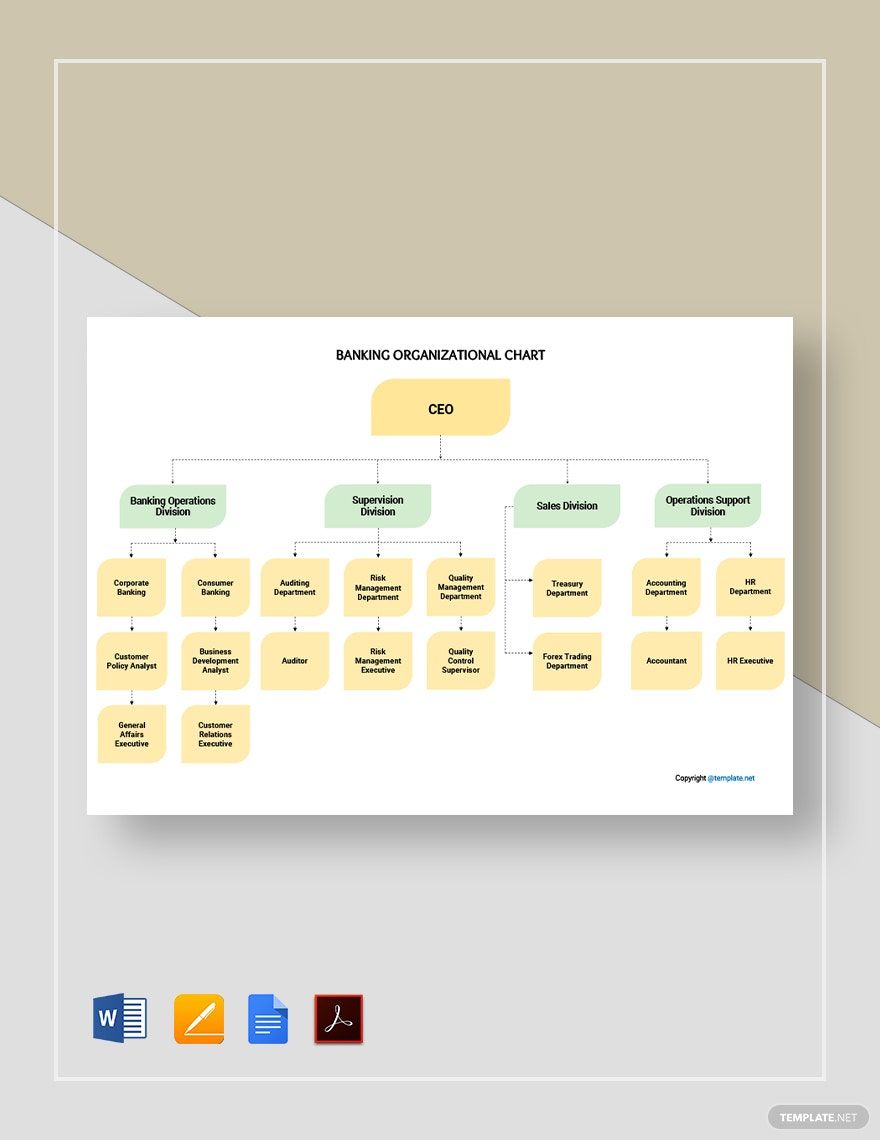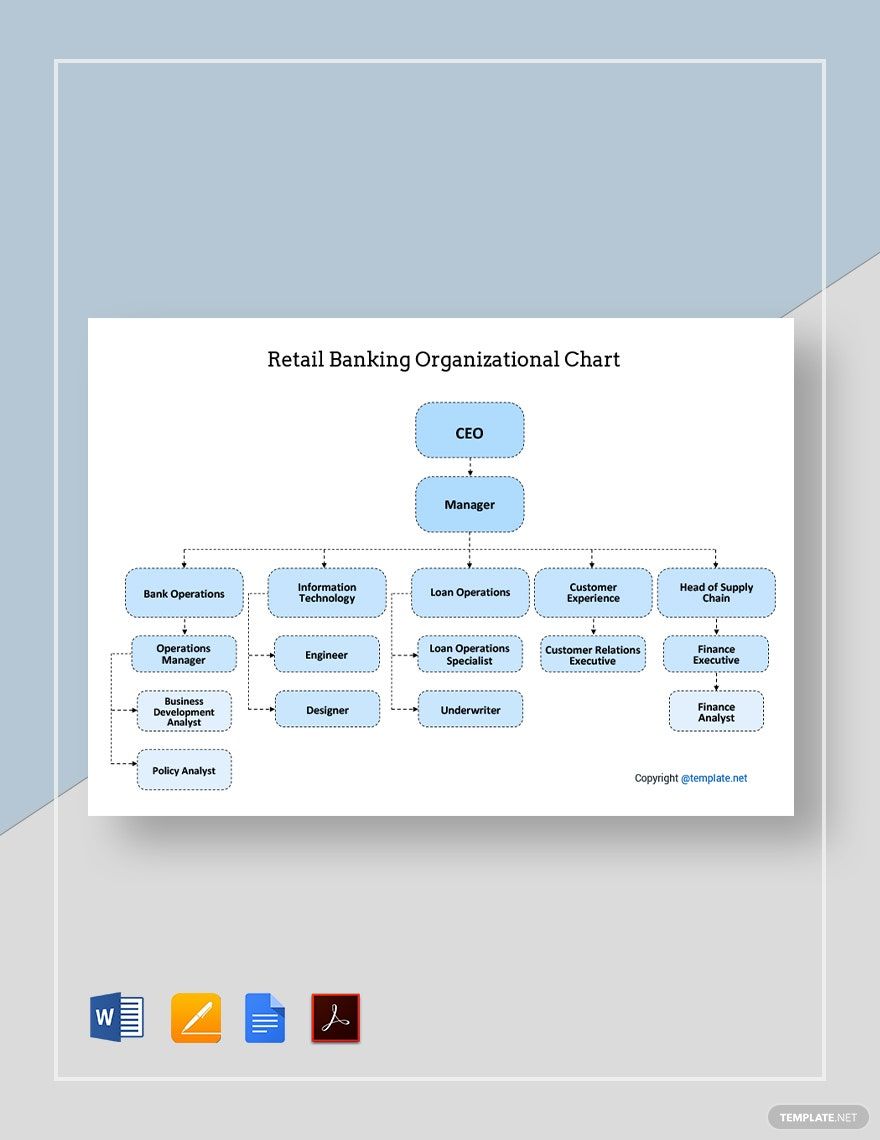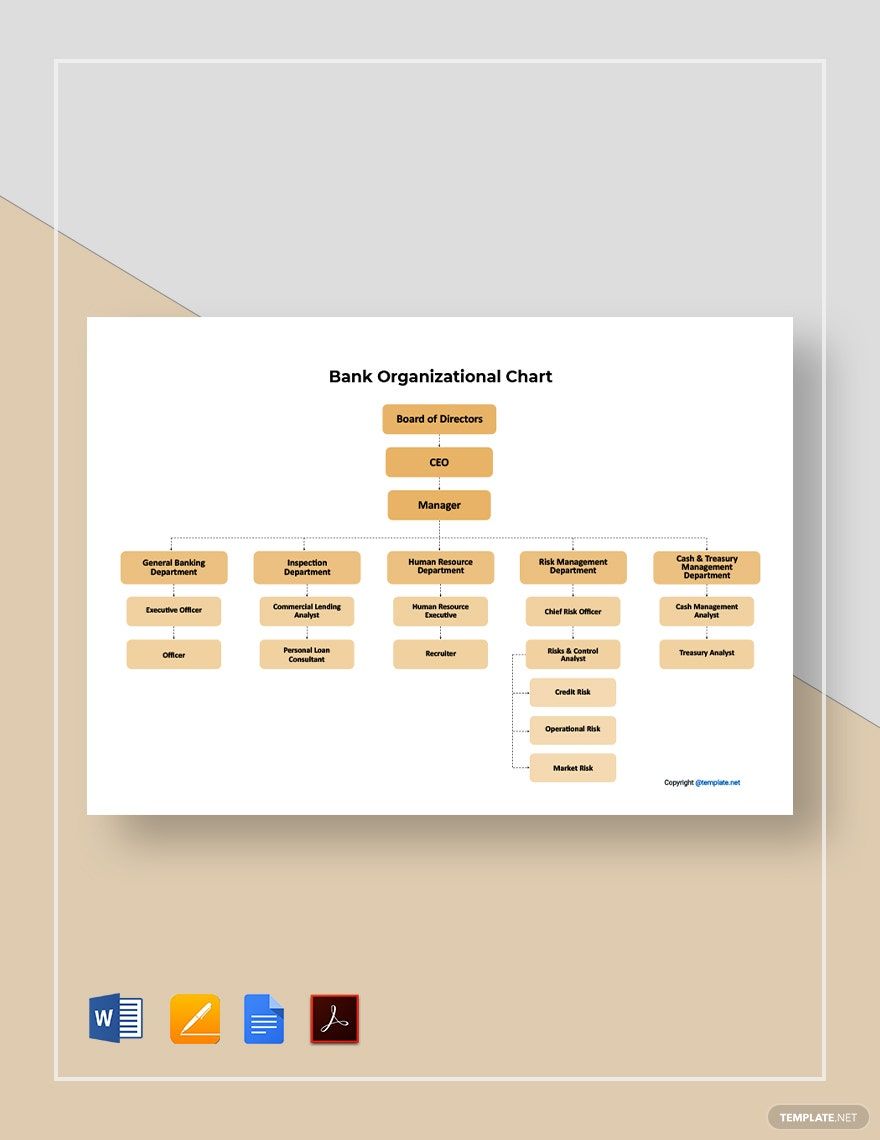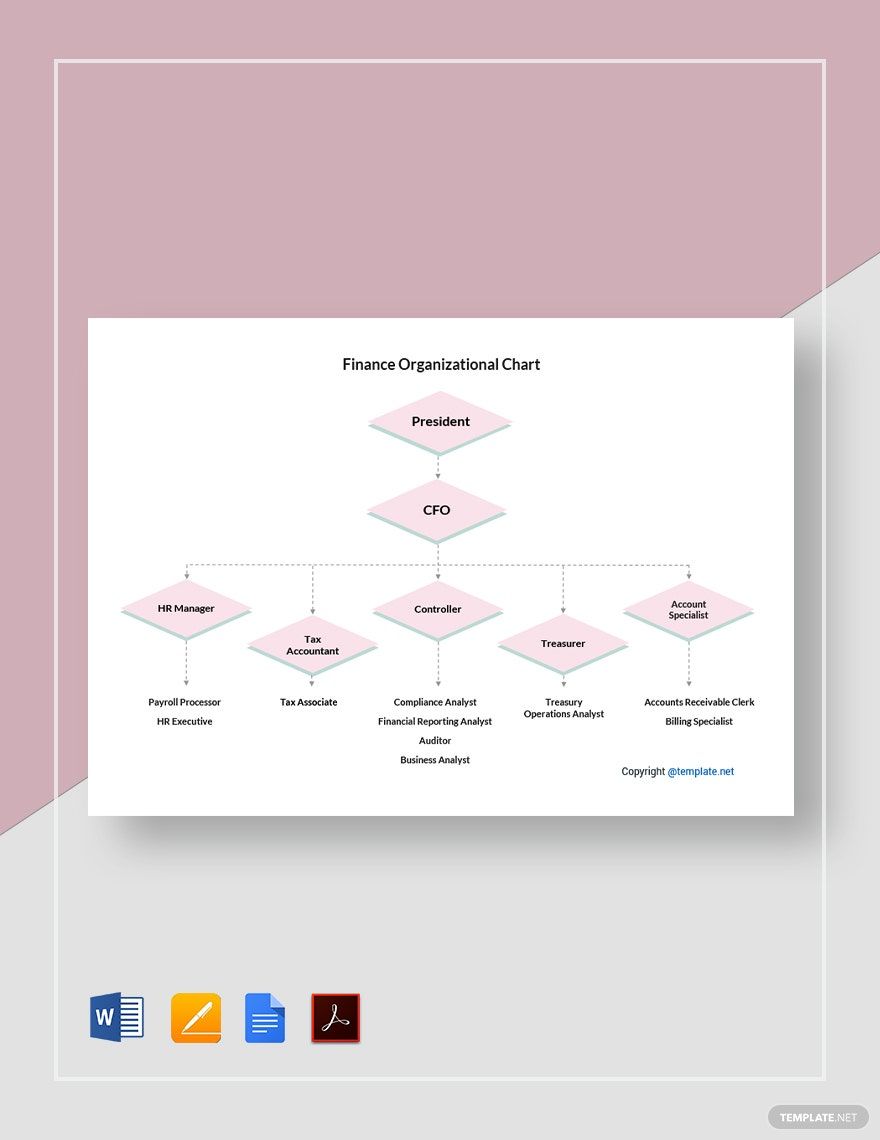Make Your Organizational Structure Come to Life with Bank Organizational Chart Templates from Template.net
Keep your financial institution's team engaged and well-informed with Bank Organizational Chart Templates from Template.net. Whether you are a human resources manager looking to create a clear hierarchy or a department leader aiming to streamline communication, these templates provide a professional-grade solution for illustrating your organization's structure. Perfect for drafting a visual representation of your department's roles or planning a restructuring project, you can include essential details like job titles, departments, and contact information directly in the charts. No advanced design skills are required, allowing you to focus on effective communication rather than complex technicalities. With customizable layouts for both internal distribution and executive presentations, you can effortlessly bring a clean and professional look to your organizational planning.
Discover the many chart designs we have on hand for your banking needs. Select a template that best suits your institution's style, then easily swap in logos or team photos and tweak colors and fonts for a personalized touch. Add advanced elements with simple drag-and-drop icons, or bring motion to your presentations with animated effects. The possibilities are endless, and with no need for prior design knowledge, anyone on your team can create stunning charts. Regularly updated templates ensure fresh options to match evolving organizational needs. When you're finished, download your chart or share it across multiple channels, printing for office use or exporting digitally to collaborate in real-time.





